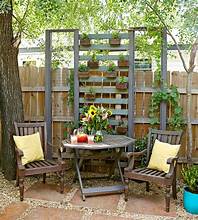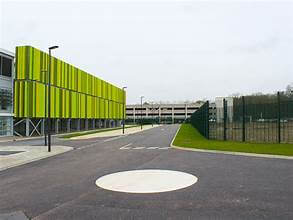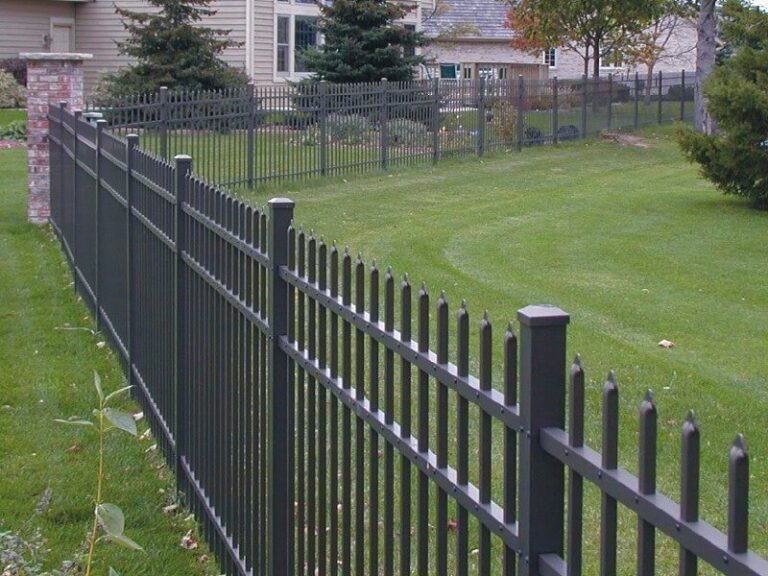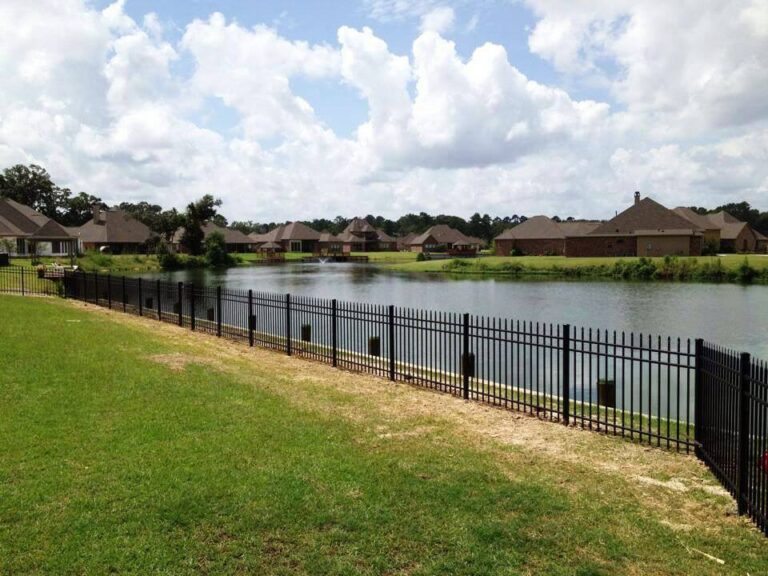When choosing fencing for extreme heat climates, opt for materials such as aluminum or vinyl to withstand high temperatures and prevent warping and fading. These materials offer durability and low maintenance in hot weather conditions.
In extreme heat climates, it is essential to select fencing that can withstand the harsh environment and provide long-lasting protection for your property.
Consider the impact of direct sunlight and high temperatures on the fencing material when making your decision.
Additionally, proper installation and maintenance of the chosen fencing will contribute to its longevity and effectiveness in extreme heat climates.
By carefully considering your options and selecting the right fencing material, you can ensure that your property is well-protected in extreme heat conditions.
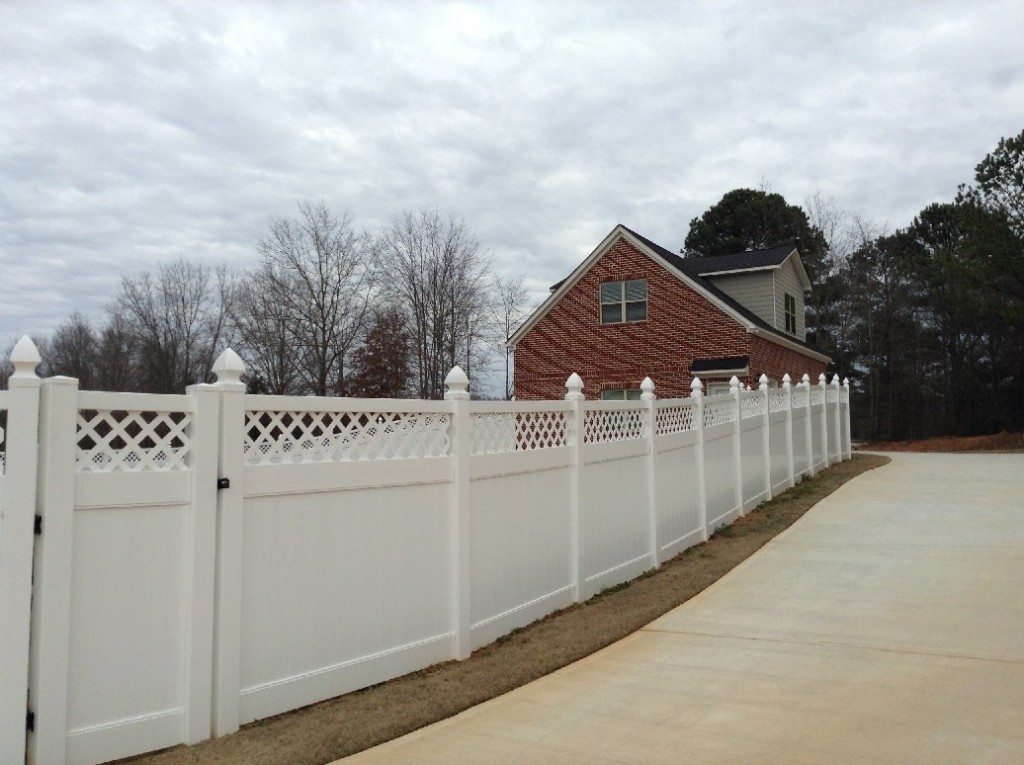
Impact Of Extreme Heat On Fencing Materials
Choosing the right fencing is crucial for a secure home. Different types offer varying security levels, aesthetics, and maintenance needs.
Understanding these options is key to informed decisions. The impact of extreme heat on fencing materials is a crucial consideration for homeowners and property owners in hot climates, including those in Fencing San Mateo.
Understanding how different fencing materials respond to high temperatures is essential for making an informed decision when selecting fencing for extreme heat conditions.
Request your free estimate to plan and budget effectively, ensuring a balance between security and aesthetics.
Extreme Heat On Different Fencing Materials
Extreme heat can pose challenges for various fencing materials, causing them to deteriorate prematurely or lose their structural integrity.
Different materials react differently to high temperatures, which can impact their durability and overall performance.
Some common effects of extreme heat on fencing materials include:
- Warping or bending
- Fading or discoloration
- Cracking or splitting
- Softening or melting
- Corrosion or rusting
Durability And Heat Resistance
When choosing fencing for extreme heat climates, durability and heat resistance are paramount factors to consider.
Certain fencing materials are better equipped to withstand the rigors of high temperatures and prolonged sun exposure.
Factors to consider for durability and heat resistance include:
- Material composition
- Surface finish and coatings
- Thermal expansion and contraction
- UV resistance and weathering
Pros And Cons Of Various Fencing Materials
Each fencing material has its own set of pros and cons when it comes to withstanding extreme heat.
Understanding the characteristics of different materials can help you make an informed decision based on your specific needs and climate conditions.
Here is a brief overview of the pros and cons of some common fencing materials in extreme heat:
| Fencing Material | Pros | Cons |
|---|---|---|
| Aluminum | Lightweight, corrosion-resistant | May expand and contract with temperature changes |
| Wood | Natural, aesthetic appeal | Prone to warping, fading, and termite damage |
| Vinyl | Low maintenance, UV-resistant | Potential for thermal expansion and brittleness |
| Composite | Durable, resistant to rot and fading | Higher initial cost |
Installation And Maintenance
The extreme heat in certain climates can take a toll on fencing, making it crucial to employ proper installation and maintenance techniques.
By ensuring the fencing is installed correctly and maintained regularly, you can help preserve its integrity and longevity in extreme heat conditions.
Installation Techniques
When installing fencing in extreme heat climates, it’s important to consider materials that are designed to withstand high temperatures.
Heat-resistant materials such as aluminum, vinyl, or composite fencing can be ideal choices as they are less prone to warping, cracking, or fading in intense heat.
Additionally, proper installation techniques such as setting posts deeply into the ground can help stabilize the fence and prevent damage due to heat-induced ground movement.
Preserve The Integrity Of The Fence In Extreme Heat
Maintaining the integrity of the fence in extreme heat climates requires diligent care and attention.
Regular cleaning to remove dust, dirt, and debris, which can exacerbate the effects of heat on the fence, is essential.
Furthermore, applying a UV-resistant sealant or paint to the fencing can help protect it from sun damage and prolong its lifespan.
It’s advisable to inspect the fence regularly for signs of wear, including loose or damaged components, and address any issues promptly to prevent further damage.
Importance Of Regular Inspections And Repairs
Regular inspections and repairs are vital for ensuring the longevity of fencing in extreme heat climates.
Conducting thorough inspections to assess the condition of the fence, such as checking for signs of corrosion, warping, or discoloration, can help identify potential issues early on.
Addressing any damage or deterioration immediately through repairs and replacements will prevent further degradation and extend the life of the fence, ultimately saving on costly replacements.
Airflow And Shade With Fence Design
When it comes to choosing fencing in extreme heat climates, maximizing airflow and shade with fence design is crucial.
The right fence can help you create a comfortable and well-ventilated outdoor space, protecting you from the scorching sun.
Here are some tips to ensure that your fence provides optimal airflow and shade in extreme heat climates:
Utilizing Open And Breathable Designs
Open and breathable fence designs are ideal for maximizing airflow in extreme heat climates.
These designs allow the wind to pass through the fence, reducing heat buildup in your outdoor area and creating a cooler environment.
Choosing materials such as bamboo or wrought iron can also help in achieving this goal, as they offer natural permeability that contributes to airflow.
Incorporating Shade Elements Into The Fence Structure
Incorporating shade elements into the fence structure can significantly enhance the comfort of your outdoor space.
Using a pergola or trellis as part of the fence design can provide shade while still allowing airflow.
This not only helps in reducing the direct impact of the sun but also contributes to creating a more pleasant environment for outdoor activities during extreme heat.
Benefits Of Landscaping For Natural Shade
Landscaping can play a crucial role in providing natural shade for your outdoor area.
Strategic placement of trees and shrubs near the fence can offer additional shade, further reducing the impact of the intense heat.
Additionally, using climbing plants to cover the fence can create a green barrier, offering both shade and a visually appealing aesthetic.
Color And Finish Selection For Heat Resistant Fencing
When it comes to selecting fencing for extreme heat climates, the color and finish play a crucial role in determining the overall heat absorption and impact on the surroundings.
Choosing the right color and finish can significantly impact the performance and durability of the fencing in such climates.
Color And Finish On Heat Absorption
The color and finish of the fencing can have a direct impact on heat absorption.
Dark-colored or matte finishes tend to absorb more heat from the sun, leading to higher temperatures and potential damage to the material.
On the other hand, lighter colors and reflective finishes can help minimize heat absorption, keeping the fencing cooler and more resilient against extreme heat.
Optimizing Reflective And Heat-resistant Finishes
Optimizing reflective and heat-resistant finishes can contribute to the overall performance of the fencing in extreme heat climates.
Utilizing specialized coatings and finishes that are designed to reflect heat away from the surface can help maintain lower temperatures and prolong the lifespan of the fencing.
Heat-resistant finishes also provide an additional layer of protection against the harsh effects of the sun, reducing the risk of warping or fading.
Choose Colors That Complement The Climate
When choosing colors for heat-resistant fencing, it’s important to consider the climate and surroundings to ensure that the fencing complements its environment.
Lighter shades like white, beige, or light grey are ideal for reflecting heat and blending with the natural landscape.
Additionally, incorporating colors that complement the surroundings can enhance the aesthetic appeal of the fencing while optimizing its heat-resistant properties.
Environmental Impact And Sustainability Of Fencing Materials
In extreme heat climates, the choice of fencing materials is vital not only for durability and heat resistance but also for their environmental impact and long-term sustainability.
Evaluating the eco-friendliness of different materials, considering their long-term sustainability and recyclability, and balancing heat resistance with environmental impact are essential factors to consider when choosing fencing for such climates.
Cost-effective And Efficient Solutions
When it comes to choosing fencing in extreme heat climates, it’s crucial to consider cost-effective and efficient solutions.
The right fencing can help maintain the integrity of the structure and provide protection against the harsh effects of the sun, reducing the need for frequent maintenance and repairs.
In this section, we’ll explore various options for heat-resistant fencing and delve into their budget-friendly and energy-efficient qualities, as well as the long-term cost benefits and return on investment they offer.
Budget-friendly Options For Heat-resistant Fencing
When considering fencing options for extreme heat climates, it’s important to prioritize cost-effectiveness without compromising on quality.
Selecting materials that are both durable and heat-resistant can help mitigate the potential for warping, discoloration, and degradation over time, thereby reducing the need for premature replacements and repairs.
- Vinyl Fencing: Known for its low maintenance requirements and heat resistance, vinyl fencing is a budget-friendly option for extreme heat climates.
- Powder-Coated Steel: Offering durability and resistance to corrosion, powder-coated steel fencing is a cost-effective solution that withstands intense heat and UV exposure.
Energy-efficient Fencing Solutions For Extreme Heat
In extreme heat climates, it’s essential to consider fencing materials that contribute to energy efficiency by providing shade and reducing heat absorption.
Energy-efficient fencing solutions not only help maintain comfortable temperatures in outdoor spaces but also contribute to reduced cooling costs for adjacent structures.
- Bamboo Fencing: This natural and renewable material offers excellent shading properties, reducing heat transfer and providing a cooler environment, making it an energy-efficient option for extreme heat climates.
- Aluminum Fencing with Louvers: By incorporating adjustable louvers into the design, aluminum fencing can provide shade when needed, allowing for better airflow and contributing to energy savings.
Long-term Cost Benefits And Return On Investment
In addition to upfront costs, it’s essential to consider the long-term benefits and return on investment associated with heat-resistant fencing options.
Investing in high-quality, heat-resistant materials not only reduces maintenance expenses but also enhances the overall value of the property.
Durable Materials: Opting for heat-resistant materials like vinyl, powder-coated steel, and bamboo can result in long-term cost savings by minimizing the need for frequent repairs and replacements.
Enhanced Property Value: The installation of energy-efficient fencing can contribute to a more comfortable outdoor environment and add value to the property, ensuring a favorable return on investment in the long run.

Frequently Asked Questions
How Does Extreme Heat Affect Fencing Material?
Extreme heat can cause material expansion and deterioration in some fencing materials, compromising their durability and longevity.
What Are The Best Fencing Materials For Extreme Heat Climates?
Materials such as aluminum, vinyl, and composite are recommended for extreme heat climates due to their resistance to warping, fading, and deterioration.
How Can Proper Installation Help In Extreme Heat Climates?
Proper installation, including sturdy anchoring and sufficient spacing, can allow for better airflow and reduce heat absorption, increasing the fence’s lifespan.
Conclusion
Choosing the right fencing in extreme heat climates is crucial.
Make sure to consider the material’s heat resistance, durability, and maintenance. Also, think about the aesthetic appeal and overall cost.
By following these tips, you can find the perfect fencing solution to withstand extreme heat and protect your property effectively.



